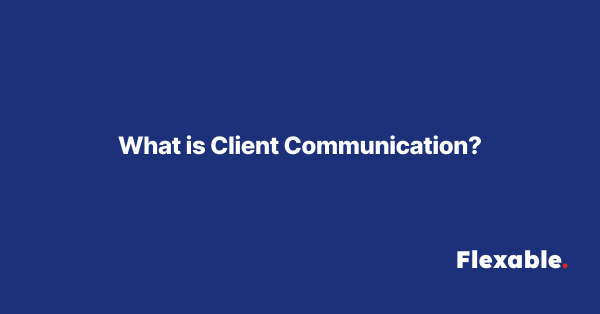Client communication in freelancing refers to the exchange of information between freelancers and their clients throughout the lifecycle of a project. This communication involves discussing project requirements, providing updates, addressing concerns, and ensuring alignment between both parties. Effective client communication is vital for building trust, maintaining professionalism, and delivering successful outcomes.
In a freelancing environment, where collaboration often happens remotely, communication becomes even more critical. Without proper communication, misunderstandings can arise, leading to project delays, dissatisfaction, or even the loss of business opportunities.
Why is Client Communication Important in Freelancing?
- Establishing Clear Expectations: Communication ensures that both the freelancer and the client are on the same page regarding project scope, deadlines, and deliverables.
- Building Trust and Professionalism: Open and consistent communication fosters trust, showing clients that their projects are in capable hands.
- Avoiding Misunderstandings: Miscommunication is a common cause of disputes in freelancing. Regular updates and clarity prevent such issues.
- Strengthening Relationships: Good communication nurtures long-term client relationships, leading to repeat work and referrals.
- Efficient Problem-Solving: When issues arise, proactive communication allows for quicker resolution.
Key Components of Client Communication
- Initial Communication
The first interaction with a client sets the tone for the entire relationship. This stage involves discussing project details, asking questions to understand the client’s needs, and presenting your approach or solutions. - Clear and Concise Messaging
Freelancers must communicate in a way that is easy to understand. Avoid jargon unless it’s industry-specific and relevant to the client. Clarity minimizes confusion and ensures alignment. - Regular Updates
Keeping the client informed about project progress is essential. Whether it’s through email, scheduled meetings, or platform-based updates, regular communication builds confidence and keeps the project on track. - Active Listening
Good communication isn’t just about speaking or writing—it’s about listening to the client’s feedback, concerns, and suggestions. Active listening demonstrates that you value their input and are committed to meeting their expectations. - Timeliness
Prompt responses to messages, questions, or feedback show professionalism and respect for the client’s time. Delayed responses can create frustration and weaken the working relationship. - Conflict Resolution
When disagreements arise, effective communication can help de-escalate the situation. Address concerns calmly, offer solutions, and work collaboratively to resolve issues.
Best Practices for Effective Client Communication
- Set Clear Communication Channels
Decide early on which platforms or methods (e.g., email, Zoom, Slack) will be used for communication. This ensures consistency and accessibility. - Define Response Times
Establish expectations for response times at the beginning of the project. For example, commit to replying to emails within 24 hours. - Use Professional Language
Maintain a professional tone in all interactions, regardless of the client’s communication style. Avoid overly casual language unless it aligns with the client’s preference. - Provide Regular Updates
Share progress reports, milestones achieved, or any potential delays. Transparency keeps clients informed and reassured. - Ask Questions
If something is unclear, don’t hesitate to ask for clarification. This proactive approach reduces the risk of mistakes. - Document Agreements
Summarize important discussions and agreements in writing. This creates a reference point for both parties and minimizes misunderstandings. - Be Empathetic
Understand the client’s perspective and show empathy when they express concerns or challenges. This fosters a collaborative and positive relationship.
Challenges in Client Communication
- Language Barriers: For freelancers working with international clients, language differences can lead to misunderstandings. Simplifying language and confirming understanding can help.
- Time Zone Differences: Coordinating communication across different time zones requires flexibility and planning.
- Unclear Client Expectations: Some clients may struggle to articulate their needs. Freelancers must ask probing questions to clarify.
- Difficult Clients: Handling demanding or unresponsive clients requires patience, professionalism, and adaptability.
Tools for Effective Client Communication
- Email Platforms: For formal and detailed communication, email remains a staple.
- Messaging Apps: Tools like Slack, WhatsApp, or Skype enable quick and real-time communication.
- Video Conferencing: Zoom, Google Meet, and Microsoft Teams are excellent for detailed discussions or presentations.
- Project Management Software: Platforms like Asana, Trello, or Monday.com streamline communication about tasks, deadlines, and progress.
Conclusion
Client communication is the backbone of successful freelancing. By maintaining clear, consistent, and professional interactions, freelancers can build trust, deliver exceptional results, and cultivate lasting relationships. While challenges like language barriers or time zones may arise, adopting best practices and leveraging the right tools can overcome these hurdles. In an industry where trust and reliability are paramount, mastering client communication is essential for sustained success.

